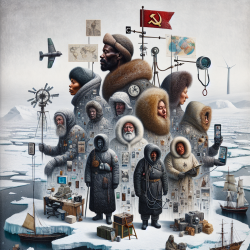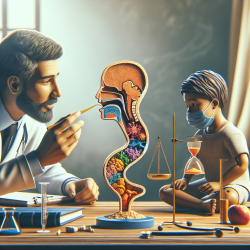Introduction
The Soviet Union's ambitious project to acclimatize humans to the Arctic environment, as detailed in "The making of the Homo Polaris: human acclimatization to the Arctic environment and Soviet ideologies in Northern Medical Institutions," offers intriguing insights for modern practitioners. This historical endeavor aimed to transform both indigenous populations and settlers into a homogeneous group, referred to as Homo Polaris, capable of thriving in the harsh Arctic conditions. Although the project did not fully achieve its objectives, it provides valuable lessons for practitioners today, particularly those involved in creating adaptive strategies for diverse populations.
Understanding the Homo Polaris Concept
The Homo Polaris project was a settler colonial science initiative that sought to adapt settlers from European Russia to the Arctic environment while simultaneously integrating indigenous peoples into Soviet ideologies. The project's failure to achieve its goals highlights the complexities of human adaptation and the importance of considering cultural, environmental, and social factors in such endeavors.
Lessons for Practitioners
- Embrace Cultural Knowledge: The Soviet project underestimated the value of indigenous knowledge in surviving Arctic conditions. Practitioners should recognize and incorporate local cultural practices and wisdom when designing interventions for diverse populations.
- Holistic Approaches: The project’s emphasis on physical acclimatization overlooked social and psychological factors. A holistic approach that considers environmental, social, and psychological aspects is crucial for successful adaptation strategies.
- Flexibility and Adaptation: The rigid Soviet approach failed to adapt to unforeseen challenges. Practitioners should remain flexible and open to modifying strategies based on real-world feedback and outcomes.
Encouraging Further Research
The Homo Polaris project underscores the need for continued research into human adaptation to extreme environments. Practitioners can benefit from exploring how modern technologies and methodologies can enhance our understanding of human adaptability and resilience. Collaborative research that integrates diverse perspectives, including those of indigenous communities, can lead to more effective and culturally sensitive adaptation strategies.
Conclusion
The Soviet Homo Polaris project, while not entirely successful, offers valuable insights into the complexities of human adaptation to extreme environments. By embracing cultural knowledge, adopting holistic approaches, and remaining flexible, practitioners can enhance their strategies for improving outcomes in diverse populations. For those interested in delving deeper into the original research, the full paper can be accessed here: The making of the Homo Polaris: human acclimatization to the Arctic environment and Soviet ideologies in Northern Medical Institutions.










